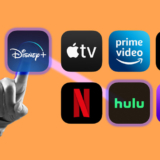Max Price Hike – Welcome Back to the New Cable Age
Remember when streaming was the promised land, a utopian alternative to the tyrannical reign of cable? It seems those halcyon days are slipping further into memory. This week, Max, the streaming behemoth formerly known as HBO Max, announced a hike in its ad-free subscription plans. The cheapest option will now set viewers back $16.99 per month, up from $15.99—a seemingly small bump that speaks volumes about the shifting landscape of home entertainment.
This price increase isn’t just another line item on your monthly budget; it’s a symptom of a deeper, more troubling trend. Streaming services, once the vanguard of affordable, flexible entertainment, are steadily becoming a mirror image of the very cable packages they sought to replace.
Let’s rewind a bit. The rise of streaming was fueled by the promise of choice and cost-effectiveness. Consumers were enticed by the idea of paying for what they wanted, when they wanted, without the bloat of traditional cable bundles. Max, with its rich library of prestige content, was a pioneer in this revolution. Yet, as more players entered the fray, the competitive edge that kept prices in check has dulled, leading to an inevitable climb in costs.
This latest move is a stark reminder that the era of cheap, a la carte viewing may be behind us. At $16.99 per month for ad-free access, the pricing edges closer to the monthly fees once associated with premium cable channels. This isn’t just about inflation or the rising costs of producing high-quality content—though those factors certainly play a role. It’s about the evolution of the streaming industry into a sprawling ecosystem that increasingly resembles the cable model of old.
Consider the broader picture: Netflix, Disney+, Hulu, and Amazon Prime have all incrementally raised their prices over the past few years. Subscribers are now juggling multiple services, each with its own price tag, essentially reconstructing the pricey bundle system that cable companies perfected. The irony is palpable. We cut the cord to escape the clutches of cable conglomerates, only to find ourselves ensnared in a new web of streaming subscriptions.
The streaming giants argue that these price hikes are necessary to fund original programming and maintain extensive libraries. the streamer, in particular, points to its slate of blockbuster series, exclusive films, and high-production-value originals as justification for the increased fees. But at what point does the consumer begin to feel the pinch too acutely? When does the cumulative cost of maintaining a handful of streaming subscriptions outstrip the value they provide?
The answer to that question is becoming more urgent. As the cost of streaming services inches upward, the once-clear advantage over cable begins to blur. The frustration is compounded by the proliferation of ad-supported tiers and premium add-ons that create a confusing and fragmented viewing experience. We’ve traded the tyranny of the cable box for the tyranny of managing multiple streaming accounts, each demanding its own monthly tithe.
The price hike is more than a mere adjustment; it’s a signal of the broader transformation within the streaming industry. As these platforms continue to inflate their fees, consumers are left grappling with a reality that feels uncomfortably familiar. The promise of affordable, customizable entertainment is fading, replaced by the creeping sense that we’ve simply swapped one set of chains for another. If streaming services continue down this path, they risk alienating the very audience that fueled their rise—an audience that may soon be asking, “Why did we ever cut the cord?”






